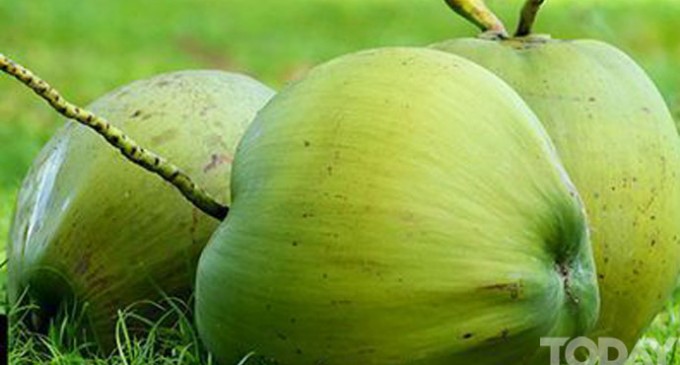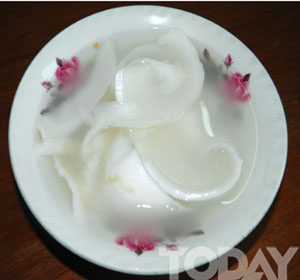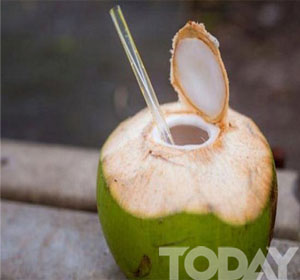Flora in Myanmar Culture: Coconut

Coconut is the fruit of a coconut palm which is a tall tree. Botanically termed “cocos nucifera, it is native to the East indies but it grows wild or is cultivated in the insular, constal and inland areas of indian sub-continent, south and south east Asia. Its fruit is a large seed with a thick hard shell that encloses edible white meat and has a milky fluid filling the hollow center.
In Myanmar, coconuts are of two kinds (1) Nicobur and (2) Adaman (နီကိုဘာရီ အုန္း၊ အထရံအုန္း) The former is superior in quality and value to the latter. Like other palms such as toddy, betel nut, and oil palms, coconut palm is useful for food, construction furniture, house hold objects, implements, weapons, medicine and rituals and festivals.
Its meat and milky fluid are consumed raw for fast food and drink or used in cooking and making a variety of cakes. Rice cooked with coconut milk called ” Ohn Htamin” and noodle prepared with its milk called “Ohn No Khauk Swe” are favourite Myanmar culinary specialize. Coconut milk and sliced coconut meat are “must” ingredients in making Myanmar traditional cakes made of glutirous rice, or sago, or wheat.
Myanmar rural folks spare no part of oconut palm tree. Its tall trunks are used in building houses and fences, its trends of leave are good for roofing and sun shading, its hard shells are used as containers-cups, cases, combs etc. Furniture made of coconut palm wood are cheap, comfortable and hygenic. Fibres around the coconut seed is made into reslient rope used for tying and pulling heavy load.
In herbal medicine, coconut meat and milky juice are recommended for nourishment recovering from stomach diseases and healing fire or sun burns and good for blood circulation.
In rituals and ceremonies a green perfect coconut fruit arranged with three bunches of bananas around it in a raised basket or any container called Kadaw Pwe (ကန္ေတာ့ပဲြ) is Myanmar traditional fruit arrangement for homage paying ritual or any communial activities such as charity, novitiation, ordination, consecration, house warming, paying respects to the Buddha, the aged, the parents and the teachers.
Believers of nat-spirits paid homage to them with “Kadawpwe”, and hungs on the main post of the house a handsome green coconut decorated with red and white cotton ribbons and flowers to propitiate the two nat spirits, black smith U Tint Dei and younger sister Myat Hla to protect the house and the family. They are entitled Eindwin Min Maha Giri (The Interior Guardians of Great Mountain). Since the time of Bagan kings, in the month of Nattaw (December) a festival is held yearly at the shrine on the summit of Mt. Popa is honour of them, who “guard every household and family”.
In Myanmar literature coconut occupies pride of place. It is described in prose and sung in verses. In the lat Konbaung Period of Myanmar History, one outstanding play wright and versifier named U Ponnya composed a long poem on the different utilities of coconut fruit in a very lively and amusing style and language.
./wp-content/uploads/2018/10/Emirate-Online-TDY.png)


















There are no comments at the moment, do you want to add one?
Write a comment